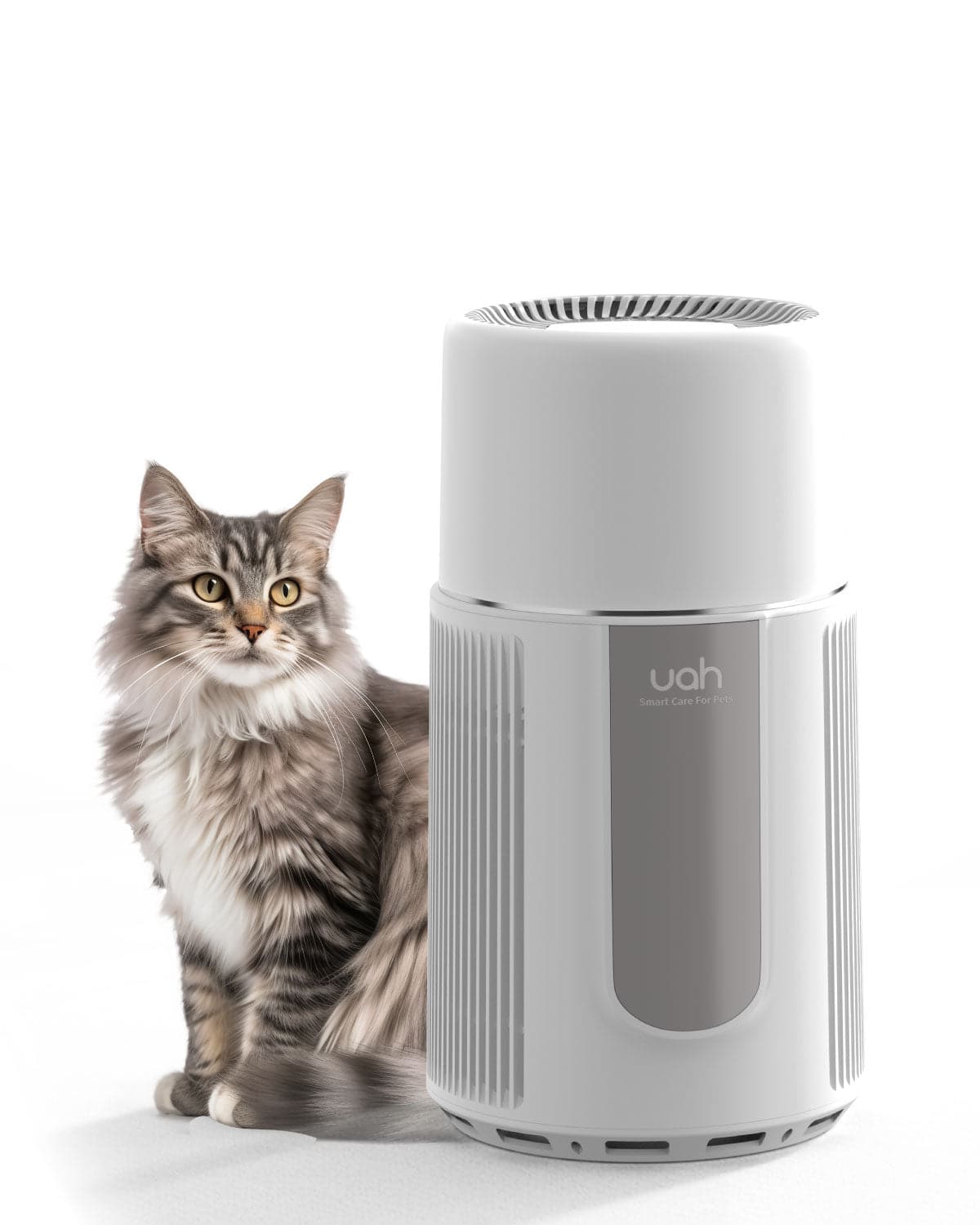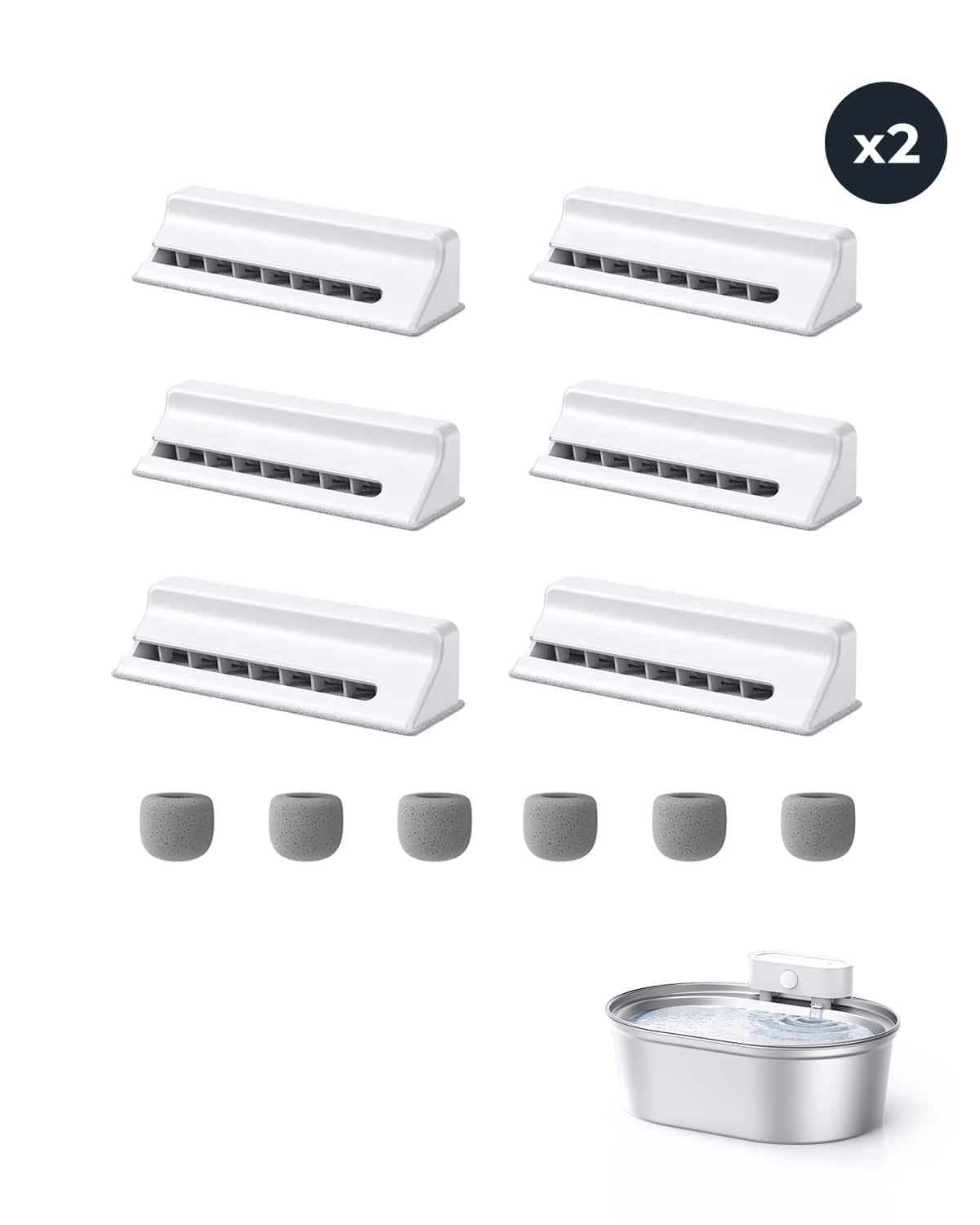Bell Training Puppy: A Step-by-Step Guide to Teach Your Puppy to Ring a Bell to Go Outside
|
|
Time to read 7 min

UAHPET Stainless Steel Self-Cleaning Cat Litter Box

UAHPET 2025 Upgrade Visible Stainless Steel Cat Water Fountain Pro

Uah Pet Air Purifier

Uah Pet ZERO Wireless And Automatic Cat Water Fountain

12 pcs Replacement Filter for Stainless Steel Wireless Pet Water Fountain

12 pcs Uah Pet Replacement Filter for ZERO Cat Water Fountain
|
|
Time to read 7 min
Bell training is a popular method used to train puppies to communicate their need to go outside to relieve themselves. This method involves hanging a bell on the door handle and teaching the puppy to ring the bell when they need to go outside. This technique can be a useful tool for pet owners who want to avoid accidents in the house and create a positive reinforcement training experience for their furry friend.
Understanding Bell Training puppy
Bell training is based on the concept of positive reinforcement, which means rewarding good behavior and ignoring bad behavior. The idea is to teach the puppy to associate ringing the bell with going outside to do their business. This method is effective because it gives the puppy a clear way to communicate their needs, and it also helps to establish a routine for them.
Step-by-Step Guide to Bell Training To successfully bell train a puppy, it is important to follow a step-by-step process. The first step is to choose a bell and hang it on the door handle that leads outside. Then, the owner must teach the puppy to ring the bell by gently tapping it with their paw or nose. Once the puppy has learned to ring the bell, the owner should reward them with a treat and take them outside to do their business. With consistency and patience, the puppy will eventually learn to ring the bell on their own when they need to go outside.
Bell training is an effective method for teaching puppies to communicate their need to go outside.
This technique is based on positive reinforcement and helps establish a routine for the puppy.
To successfully bell train a puppy, follow a step-by-step process and be consistent with rewards and training.
Bell training is a popular method of housebreaking puppies. The basic principle of bell training is to teach the puppy to associate the sound of a bell with going outside to potty. The puppy is taught to ring the bell when it needs to go outside, and the owner responds by taking the puppy outside to potty.
Consistency is key when it comes to bell training. The puppy should be taken outside to potty at regular intervals, and the owner should always respond when the puppy rings the bell. Positive reinforcement should also be used to encourage the puppy to ring the bell. This can be done by giving the puppy a treat or praise when it rings the bell.
The type of bell used for bell training is important. The bell should be loud enough to be heard throughout the house, but not so loud that it scares the puppy. A small bell with a pleasant tone is ideal. The bell should be positioned at the height of the puppy's nose, so that it is easy for the puppy to reach. It should also be placed in a consistent location, such as on the door handle or a hook next to the door.
Overall, bell training can be an effective method of housebreaking puppies. With consistency and positive reinforcement, the puppy can learn to associate the sound of the bell with going outside to potty. By selecting the right bell and positioning it in a consistent location, the owner can make the training process easier and more effective.
Bell training is a popular method of housebreaking puppies. It involves teaching them to ring a bell when they need to go outside to relieve themselves. This method is effective because it gives the puppy a clear signal to communicate their needs and helps to prevent accidents in the house.
The first step in bell training is to introduce the puppy to the bell. Choose a bell that is easy for the puppy to reach and use. Hang the bell on a string or ribbon near the door that you will be using to take the puppy outside. Allow the puppy to sniff and investigate the bell, but do not force them to use it yet.
Once the puppy is comfortable with the bell, it's time to start training them to ring it when they need to go outside. Begin by ringing the bell yourself every time you take the puppy outside to go potty. After a few days, encourage the puppy to ring the bell themselves by gently guiding their nose to the bell and saying a command such as "ring the bell."
Bell training requires patience and repetition. It may take several weeks or even months for the puppy to consistently use the bell to signal their need to go outside. Be consistent in your training and always praise the puppy when they use the bell correctly. Avoid scolding or punishing the puppy for accidents in the house, as this can be confusing and counterproductive. With time and patience, most puppies can be successfully bell trained.
Bell training a puppy can be a challenging process, and it's not uncommon to face some issues along the way. One of the most common issues is that the puppy may not understand what the bell is for or how to use it. In this case, it's important to go back to the basics and start from scratch.
Start by showing the puppy the bell and ringing it yourself. Then, take the puppy's paw and gently touch it to the bell while saying the command word, such as "potty" or "outside". Repeat this process several times until the puppy starts to associate the bell with going outside.
Another issue that may arise is that the puppy may ring the bell excessively or at inappropriate times. This can be frustrating for the owner, but it's important to remain patient and consistent. One solution is to only allow the puppy to ring the bell when it's time to go outside for potty breaks. If the puppy rings the bell at other times, simply ignore it and do not take them outside.
In addition to addressing issues, there are also practical solutions that can help make bell training easier. One solution is to keep the bell in a consistent location, such as near the door. This will help the puppy associate the bell with going outside and reduce confusion.
Another practical solution is to use treats as positive reinforcement. When the puppy successfully rings the bell and goes outside, give them a treat and praise them. This will help reinforce the behavior and encourage the puppy to continue using the bell.
If the puppy continues to struggle with bell training despite your best efforts, it may be time to seek professional help. A dog trainer or behaviorist can provide personalized guidance and support to help overcome any challenges.
It's important to remember that every puppy is different and may require different approaches to bell training. With patience, consistency, and the right tools, however, it's possible to successfully train your puppy to use a bell for potty breaks.
Bell training is an effective method for housebreaking puppies. By using positive reinforcement, owners can teach their puppies to associate ringing a bell with going outside to relieve themselves.
It is important to note that bell training requires patience and consistency. Puppies may not understand the concept right away and may need to be taken outside frequently to reinforce the behavior.
Owners should also be aware of their puppy's individual needs and adjust the training accordingly. Some puppies may need more frequent trips outside, while others may catch on quickly and need less reinforcement.
Overall, bell training can be a useful tool for puppy owners looking to housebreak their furry friends. With patience, consistency, and positive reinforcement, puppies can learn to signal when they need to go outside and avoid accidents indoors.
Bell training can be started as early as 8 weeks old. It is important to start early to establish good habits and prevent accidents. However, it is never too late to start bell training an older puppy or adult dog.
To introduce a puppy to bell training, hang a bell near the door that leads to the potty area. Encourage the puppy to ring the bell before going outside for potty time. Use positive reinforcement such as treats and praise when the puppy rings the bell. Repeat this process consistently until the puppy learns to associate ringing the bell with going outside for potty time.
A young puppy should be taken outside for potty time every 2-3 hours during the day and once or twice during the night. It is important to be consistent with the schedule to establish good habits. Gradually increase the time between potty breaks as the puppy gets older and can hold their bladder for longer periods of time.
Consistency and positive reinforcement are key when bell training a puppy. Use treats and praise to reward the puppy for ringing the bell and going outside for potty time. It is also important to be patient and consistent with the training process.
Bell training is based on the principles of classical conditioning and operant conditioning. Classical conditioning involves associating a bell ringing with going outside for potty time. Operant conditioning involves rewarding the puppy for ringing the bell and going outside for potty time.
A small, lightweight bell with a clear ringing sound is best suited for bell training a puppy. A bell that is too heavy or difficult to ring may discourage the puppy from using it. It is important to choose a bell that is durable and easy to clean.

